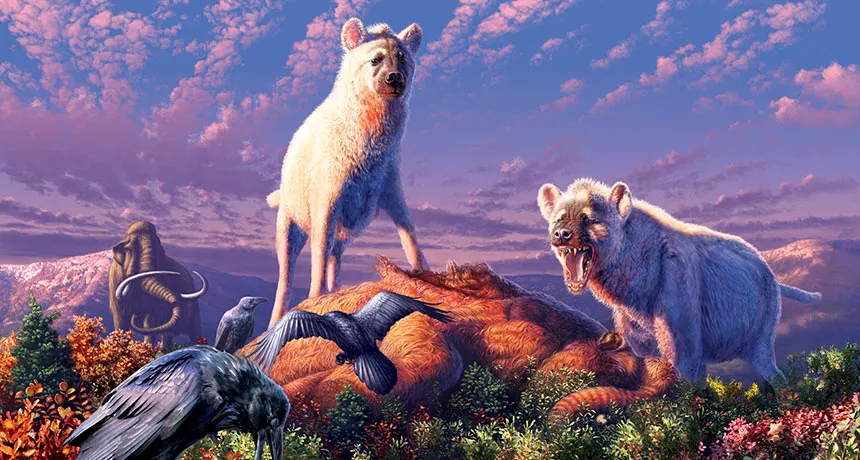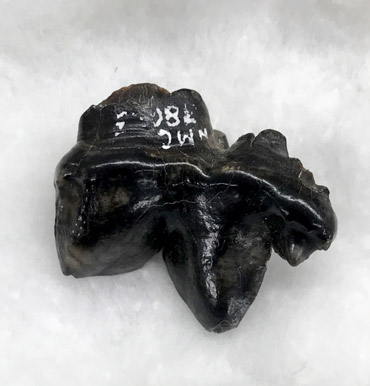Hyenas roamed the Arctic during the last ice age
Newly identified fossils confirm how the carnivores migrated to North America, researchers say

ARCTIC HYENAS New fossil evidence shows that hyenas lived in the Arctic during the last ice age, as depicted in this illustration.
Julius T. Csotonyi
- More than 2 years ago
Modern hyenas stalk the savannas of Asia and Africa, but the animals’ ancient relatives may have had snowier stomping grounds: the Arctic. Two fossilized teeth, collected in Canada in the 1970s, confirm a long-held hunch that ancient hyenas ventured into North America via the Bering land bridge, scientists say.
The teeth belonged to members of the extinct genus Chasmaporthetes, also known as the “running hyena” for their unusually long legs, researchers report June 18 in Open Quaternary. Like wolves, the creatures could sprint over long distances. That ability that may have enabled the hyenas to make the long trek to America from Asia. Running hyena remains crop up across the southern United States and central Mexico. But before the Arctic discovery, a more than 10,000-kilometer gap lay between them and their closest relatives in Mongolia.
“This new Arctic find puts a dot right in the middle of that,” says paleontologist Jack Tseng of the University at Buffalo in New York. “It actually confirms previous hypotheses about how hyenas got to the New World.”

Paleontologists originally dug up the teeth in the Old Crow Basin in the Yukon at a site nicknamed the “supermarket of fossils.” There, rushing water dislodges fossils from their soil beds and drops them along bends in the river. The spoils can be reached only by boat or helicopter, but it’s worth the effort — over 50,000 known mammal fossils have been collected in the basin to date.
For decades, the hyena teeth lay buried among fossil specimens in the Canadian Museum of Nature in Ottawa. Few field notes referenced the finds, and an unpublished manuscript by archaeologist Brenda Beebe provided the only photographs. Tseng and his colleagues finally tracked the fossils down; they were a mere six-hour drive from his home base in Buffalo.
“Hyena are one of the groups with a really patchy fossil record in North America. This finding adds to our knowledge of how the species came over,” says paleontologist Julie Meachen of Des Moines University in Iowa, who was not involved in the study. The finding opens the door for further research on the migration of carnivores across the Bering land bridge (SN: 1/31/09, p. 5), Meachen says, and may help clarify which species competed for the same kills during the Pleistocene.







